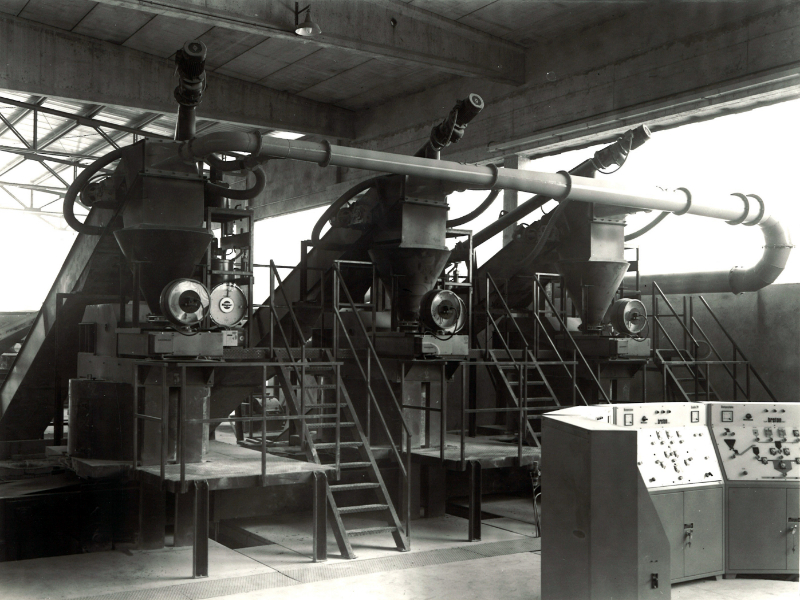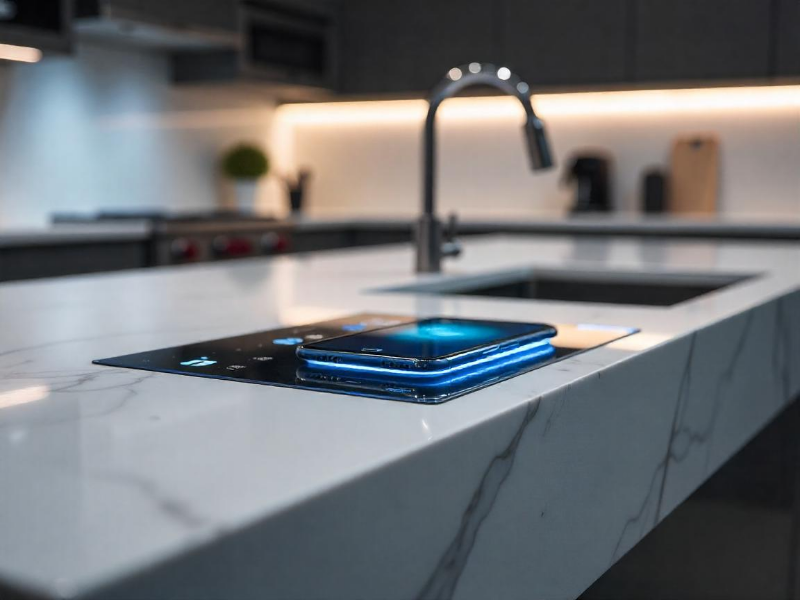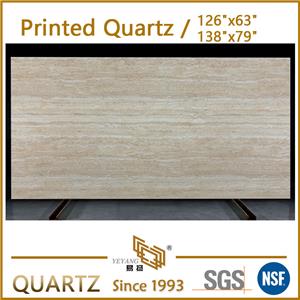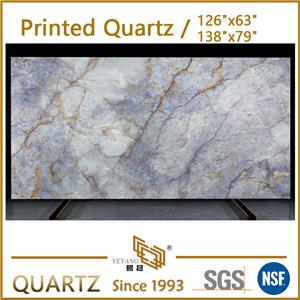How does Quartz Slab Reshape the History of Interior Design? The Evolutionary Path from Industrial Product to Design Revolution
How Does Quartz Slab Reshape the History of Interior Design? The Evolutionary Path from Industrial Product to Design Revolution
In the past few decades, quartz stone have undergone an extraordinary transformation, evolving from an industrial product to a design revolution. As a versatile, durable, and aesthetically pleasing building material, quartz slab has become a staple in interior design. From kitchen countertops to bathroom decoration, the use of quartz stone has transcended traditional boundaries, significantly influencing the aesthetics and functionality of modern homes. So, how did quartz stone evolve from an industrial product to a revolutionary design element?
1. The Birth of Quartz: An Unexpected Breakthrough in the Industrial Revolution (1960s-1990s)
The emergence of quartz stone as a building material did not happen overnight. In 1963, the Italian Breton company invented vacuum vibration pressing technology, initially used for spacecraft components. This innovation laid the groundwork for the birth of quartz slabs. In 1987, the first commercial quartz slab was introduced, boasting a bending strength 1.5 times greater than granite. However, early quartz surfaces were primarily grayish-white, with resin content as high as 15%, leading to yellowing. These early versions were mainly used in specialized settings such as hospital operating tables.

(The first Bretonstone plant merged polyester resins with crushed limestone to create engineered stone)
2. The First Design Liberation: The Aesthetic Evolution and Market Popularization of Quartz (2000-2010)
The 21st century marked the first design revolution for quartz surfaces. With the breakthrough in digital inkjet technology, the texture of quartz stone was vastly improved. Since 2005, quartz stone has been able to perfectly replicate marble patterns, with a precision error of less than 0.3mm. The hardness of quartz slabs also reached Mohs 7, greatly enhancing its durability. This technological leap helped end the "natural stone hegemony," allowing middle-class families to enjoy the luxurious look of Carrara white marble at just a fraction of the cost.
During this period, the popularity of quartz surfaces helped drive the rise of open kitchen designs. The seamless splicing technology of quartz slabs solved the problem of dirt accumulation in traditional granite joints, making kitchens cleaner and more hygienic. In 2008, IKEA promoted quartz stone globally, leading to a 400% sales surge within a year. Quartz surfaces gradually became the preferred choice for modern homes.

Calacatta Gray Veins White Quartz Countertop Quartz Kitchen Island Quartz Backsplash
3. The Second Revolution: The Rise of Functionalism and Practical Design (2011-2020)
In the 2010s, the performance and functionality of quartz surfaces underwent a significant evolution. In 2015, the introduction of nano-coating technology gave quartz slabs strong resistance to stains, including coffee spills, within just 24 hours. In 2018, silver-ion antibacterial technology made quartz stone not only aesthetically pleasing and durable but also antimicrobial, earning FDA food contact certification.
During this time, the use of quartz stone expanded beyond traditional countertop applications. The trend of "quartz furniture" emerged, with designs such as quartz stone bookshelves and dining tables gaining popularity. This elevated both the functionality and aesthetic appeal of quartz slabs. By 2020, the global market for quartz surfaces in furniture reached $2.7 billion, underscoring the vast potential of quartz stone in modern home decor.
4. The Third Wave: Intelligent and Sustainable Design (2021-2025)
In recent years, quartz slabs have entered a new phase of innovation. In 2023, advancements in light transmission technology allowed quartz stone to achieve a light transmittance rate of 48%, opening new possibilities for lighting design. In 2025, temperature-sensitive color-changing quartz surfaces will be launched, adding interactivity to home design by changing color in response to human touch.
Regarding sustainability, the production of quartz slabs has also shifted toward more eco-friendly practices. The proportion of bio-based resin in quartz stone has increased to 40%, utilizing recyclable materials from sources like PET bottles. Moreover, the use of photovoltaic sand mining and hydrogen energy firing processes has reduced the carbon footprint of quartz surfaces by 72%, highlighting the environmental benefits of these materials.

5. Conclusion and Future Outlook
The evolution of quartz slabs is not just a technological breakthrough, but also a fundamental shift in design thinking. From its humble beginnings as an industrial product, quartz stone has become an integral part of the design world, with applications extending across residential and commercial spaces. As technology and environmental considerations continue to evolve, future quartz surfaces will be even smarter, more functional, and more sustainable.
6. About Yeyang Quartz Stone
As a leading supplier of quartz slabs, Yeyang Stone is committed to providing customers with high-quality quartz stone and innovative design solutions. Whether you are in need of quartz surfaces for kitchen countertops, bathroom designs, or home decor, our products meet your needs while adding both beauty and functionality to your space.
Visit our website now to explore the latest trends in quartz slabs and quartz stone, or contact our professional team for personalized consultations and quotes. Choose Yeyang Stone to make your design dreams a reality.




